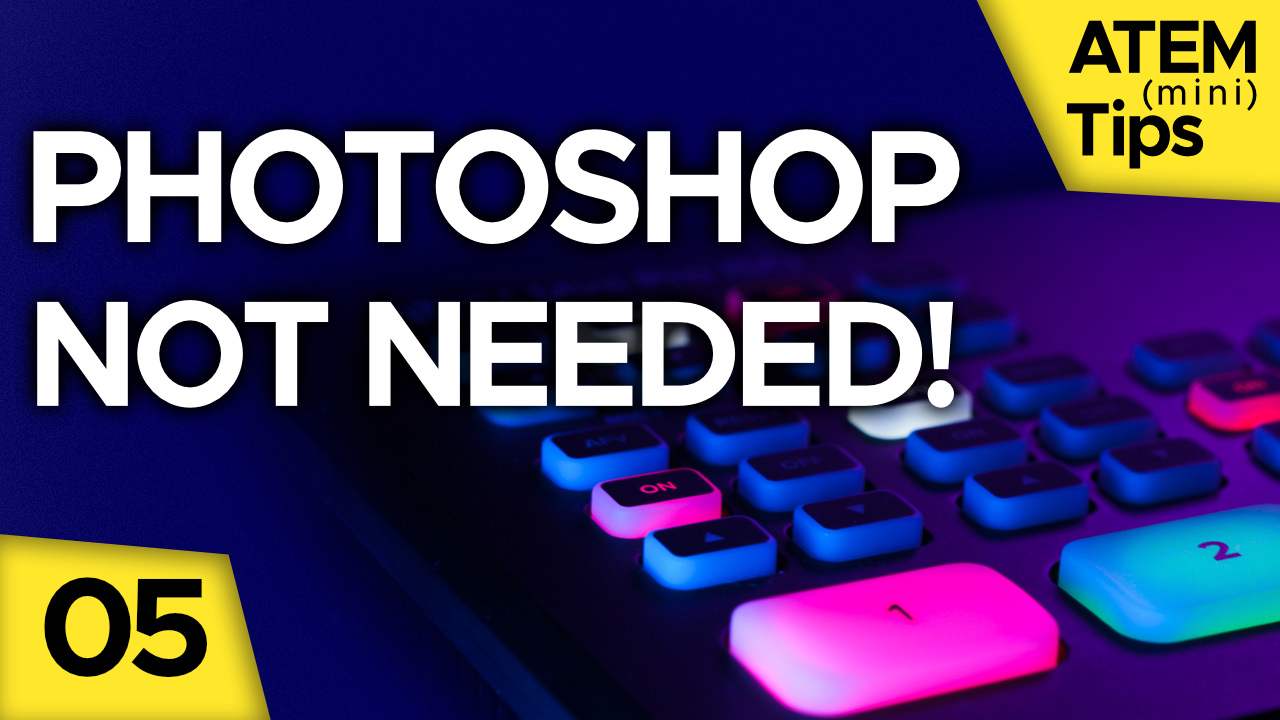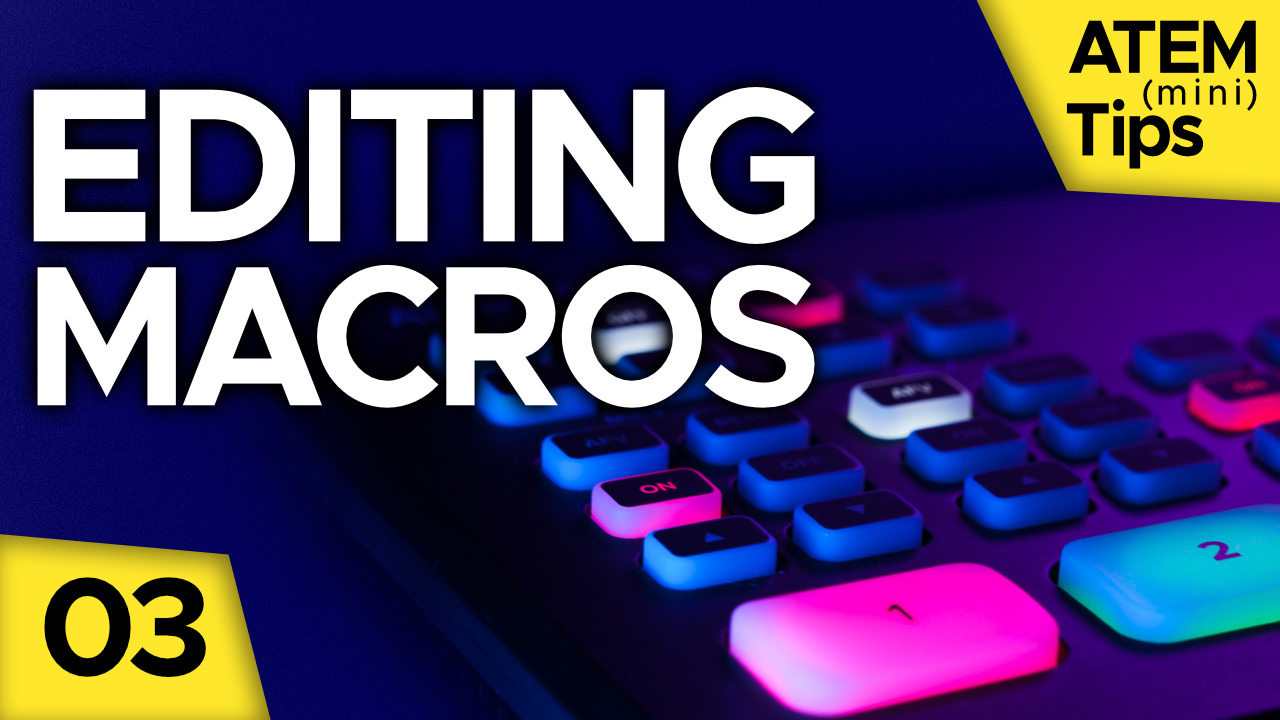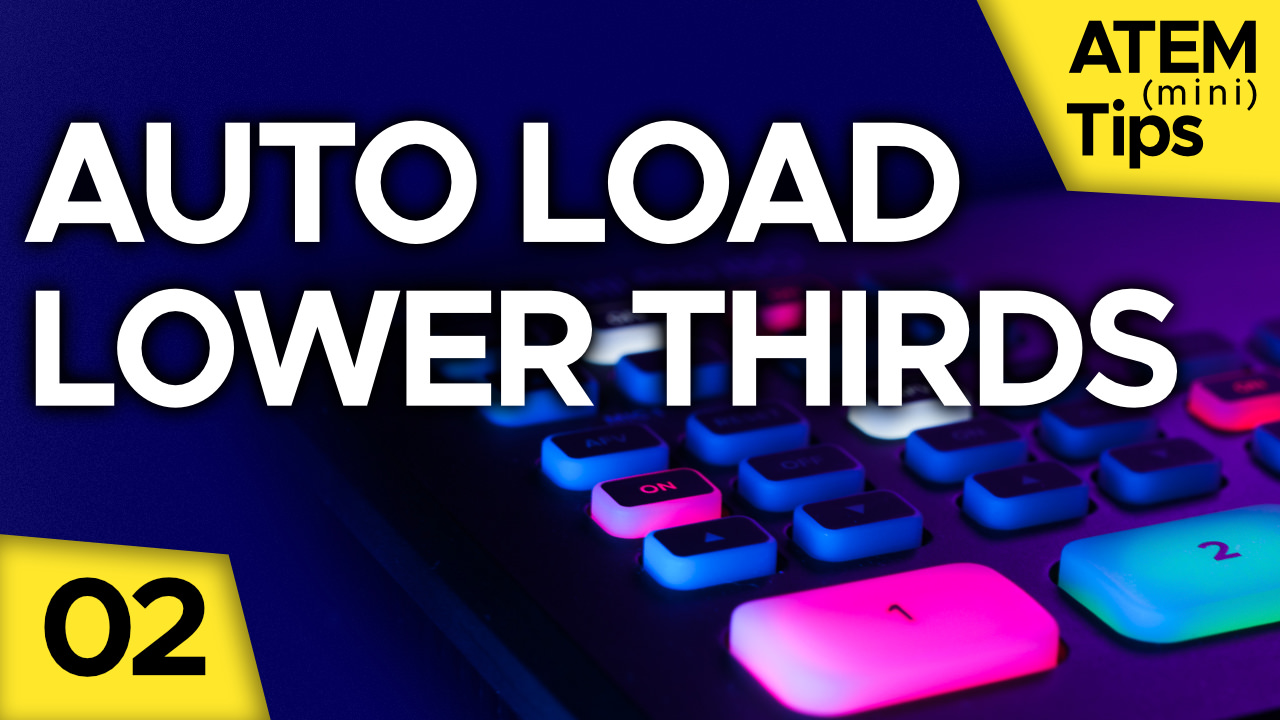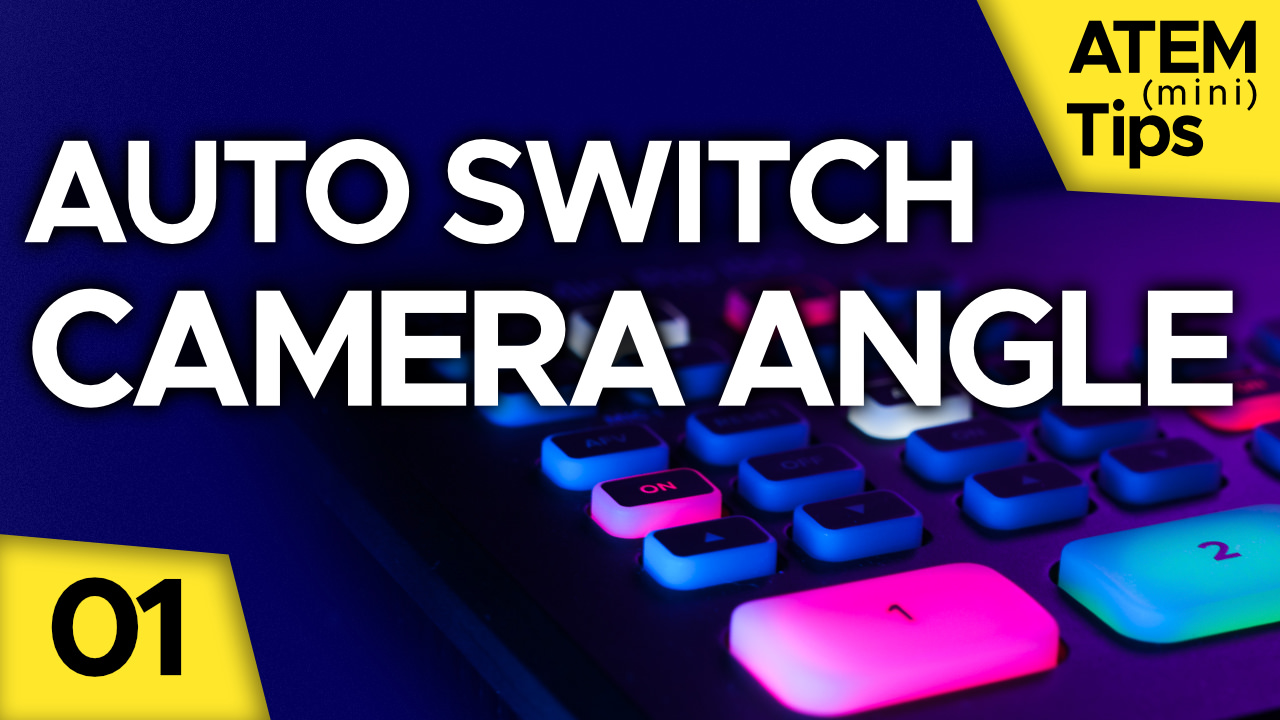In this ATEM Mini tip, we're going to talk about how you can use your cellular connection as either a backup or a primary network connection for your live streams. Now, setting either of those up is actually really easy. The tricky part though is setting it up so that your computer and your ATEM can talk to each other even when you're off of your local network and the USB port is being used by your phone.
[00:00:21] This video picks up where we left off in video number 15 where I showed you how to get your ATEM onto your local network. Once the ATEM is on the network, you can use the ATEM to stream directly to YouTube, Facebook, or wherever directly from the hardware using its built-in encoder.
[00:00:36] If you want to have a backup connection using your cellphone, this is actually really easy to configure. First of all, you're going to need to have a cellular plan that allows tethering. Assuming that you do, then all you have to do is connect the phone to the ATEM and it will just see it as an optional streaming device. It's actually really easy to do. Let's just do that first.
[00:00:53] I'll take a Lightning to USB-C cable and I'll plug this into the back of the ATEM and then let's take a look over at the ATEM software. If I go into the settings, you'll see that I have a connection priority option as Ethernet or Mobile. By setting the priority you're telling the ATEM which connection you want it to use first and for most cases, you're going to want it to be the Ethernet connection that's using your local network for your primary stream, and then only relying on your phone as a backup. Now let's verify that the phone is actually being seen by the ATEM.
[00:01:27] I'll launch the ATEM software and under the live streaming connection, you'll see there's a new symbol here, a little phone icon that's currently grayed out. This tells me that the hardware sees the phone as an optional connection. Now, let's go ahead and start live streaming. You can see that we're now on air and the cellular icon is still gray telling me that it's in standby mode.
[00:01:49] Now, let's go ahead and just yank the Ethernet connection out of the ATEM as if it lost connection to the network. First of all, as soon as I did that, I lost connection to the ATEM from the computer but if we look at the multi-view out, you'll see that that icon in the corner has gone red, telling me that it is now streaming using my cellular connection. Now, let's say we get our network access back. I'll go ahead and plug that back in. And it'll take a few moments but eventually, the ATEM software shows up on the network again and after a few moments, the live stream switches back to the Ethernet connection.
[00:02:19] Okay, so that's everything you need to do to set it up as a backup; really straightforward. If you're in a studio environment like this but you can't use your local internet connection for whatever reason, maybe your ISP is down but you still want to go live, then you can go ahead and leave everything set up as it is but set the priority to be the cellphone. To do that, I'll go back to the ATEM setup app, open the settings, and switch the connection from Ethernet to Mobile.
[00:02:43] As soon as I do that, you'll see that that icon turns blue telling me that it's the primary connection and ready to go live. Okay, so that's what we need to do to set it up so that it can stream either as a backup or using your mobile as a primary connection but what if we're out in the field? Let's say that we're going to go out somewhere remote. We're going to take the ATEM and my computer and my cameras and everything else and do a live stream from the mountain top. I've got power sorted out for the ATEM but of course, I'm going to rely on the internet connection from my cellular phone to do the live stream. That's all well and good, but how am I going to control the ATEM from my computer? How am I going to load graphics and do all the other things that I would normally do from a computer?
[00:03:22] Well, normally, I'd use the USB connection but I can't because that's being taken up by this. Okay, then that's what the network connection is for, right? Well, the thing is that I don't have a network to connect to anymore. If I plug my ATEM directly into the computer via Ethernet, that's not going to, by default at least, just work. So, we need to set it up so that it does work.
[00:03:42] It's a pretty simple network configuration but you do need to set this up. So, let's get into that. I'll go back over to the ATEM setup, jump into the settings again, and you'll notice up here that it says, “Connect using USB to adjust the network settings”. To change the network settings, I have to make a USB connection. Now, this is a really important point. It's obvious right now because it's telling me and so I'm going to do that, but it's important to remember this because once you set everything up and you go out in the field and you do your event, and then you come back, and a week later, you go to put your ATEM back on your network, and you plug it into the Ethernet connection, it won't show up on your network because it is still set to be looking for your computer directly — which we're about to configure.
[00:04:20] You won't know what's wrong because you'll have no interface telling you what's wrong, it simply won't be there the reason being that you'll need to reconnect over USB to reset the network back to the way it was. So again, just reminding you that once you set this up over USB, you'll have to put it back the way it was using USB as well. Alright, let's do this.
[00:04:37] I'll go ahead and disconnect the cellphone for now… take the USB cable that is plugged into the computer… I'll exit out of the settings and jump right back into them again and now I have setup control for my network. So, by default, it's set to DHCP, which means that the ATEM is going to get an address assigned to it by the router on your network but we're removing that router from the equation, so now we need to set this up manually.
[00:04:59] To do that, I'll switch over to static IP and at this point, some of these numbers might change, some of them may stay the same from the way you had it before, but now we need to set it up with the right numbers so the two pieces of hardware can talk to each other. Effectively, what we're going to do is build a tiny little network.
[00:05:14] The numbers that we enter in here don't actually matter that much as long as they're in the right form and we have some of the same numbers between the two devices. I'll show you. You can use these same numbers for your setup if you want to or different ones. It really doesn't matter. I'm going to use an IP address of 192.0.0.3. Subnet mask of 255.255.0.0 and then a gateway of 192.0.0.1.
[00:05:38] Now, this gateway is very important. The gateway address and the IP address have to have the same numbers in the first three positions. So again here 192.0.0. Then we have the fourth number. The gateway IP typically ends in 1. This is also called the router field. Now, we don't have a router so the computer is going to become the router effectively for this but again, we're setting that IP address to 1 at the end. So 192.0.0.1. I've set this IP address to 0.3 and on the computer, I'm going to set it to 0.2. Again, for the IP address, it doesn't matter as long as those two numbers at the very end are different from each other and the first three numbers are the same across the devices.
[00:06:19] I'll move this over to the side and open up my computer's network settings next. Here you'll see that I'm currently connected to my Wi-Fi network but to ensure that I set this up properly and that I'm not accidentally seeing the devices across the network, I'm actually going to turn off Wi-Fi to ensure that there's no way that I'm possibly connected to my actual local network here. I'll turn that off and then, I'm going to set a new location here. Now, this is not necessary. This just makes it easier to switch back and forth between your home or studio or work location and some other location where all your network settings change at once. It's totally up to you if you set this up or not.
[00:06:54] Now, I'm obviously on a Mac here. If you're doing this on a Windows PC, I know that there are very similar network configurations on Windows. I don't know exactly what they are but following the same guideline, you should be able to sort this out. I'm going to create a new location and call this “ATEM in the wild”. And now, I'm ready to configure an IP address just like I did on the ATEM.
[00:07:15] Because my Mac doesn't have a built-in Ethernet port. I need to use an adapter. So I've got that right here. This is a simple Belkin USB-C to Ethernet adapter connected to an Ethernet cable, and the other end of that is right here. Let's go ahead and take the ATEM off of my local network and plug it into this cable here. I'll take the other end of this and plug it into my Mac.
[00:07:35] As soon as I do, you'll see that a new network interface has become available, the Belkin USB-C to LAN adapter. Now I'll go ahead and configure the IP address manually just as I did for the ATEM and here's where I need to enter the same numbers. I'll start with the IP address here. Copy and paste that in but of course I need to make it different, so I'll set that to .2 then I'll take my subnet mask and paste that in and the gateway which has to be the same, set in there. Click Apply, and that's it.
[00:08:04] So again, the router or gateway are the same, the subnet mask is the same and the IP addresses are different. Now, we're ready to test this out but make sure that you save the settings in the ATEM setup first. I'll go ahead and click Save here and then to test this, I'm going to just yank out that USB connection and they should find each other over the local network that we just set up.
[00:08:24] The ATEM Mini still shows up on the network here. If I click on the setup, we'll see that it must be talking to it because it has an IP address and I'm able to get into it, and if I launch the ATEM software, we'll see it connects and there we go, the ATEM and the computer are talking to each other. Next, we need to set the cellular connection to be the primary connection; not the backup. Otherwise, as soon as I try to go live, the ATEM seeing this network is going to try to use this computer to live stream but of course, this computer doesn't actually have an internet connection. So, let's make sure we change that.
[00:08:55] We'll go back over to the ATEM setup, jump into the settings and ensure that the connection priority is set to Mobile. It is, so that means we're ready to go. Finally, I'll just go ahead and reconnect my phone to the ATEM. Back over to the ATEM software, we see that blue icon which means we're ready to go. Click On Air and there we have it. I'm now live streaming using the cellular connection from my iPhone.
[00:09:16] If you have any questions about setting up this network configuration, please drop them in the comments below. This can get a little bit tricky but as long as you get the right numbers in there, everything should just work.
[00:09:25] Thanks as always for watching. If you haven't subscribed, please be sure you do that. Don't forget to share this video. Hit that like button and also, remember that I'm now publishing videos without ads. If you've gotten this far and you've learned something from this video, please consider subscribing to the channel. It costs as little as 99 cents a month — you can pay a little bit more if you want to! — but 99 cents a month is all it takes to become a channel member and that will help to support this channel so that I don't have to run ads on the videos which I think we can all agree is a better way to watch YouTube.
Thanks so much for watching and we'll see you in the next video.





Comments from YouTube